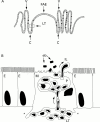Unsolved mysteries of intestinal M cells
- PMID: 11034595
- PMCID: PMC1728097
- DOI: 10.1136/gut.47.5.735
Unsolved mysteries of intestinal M cells
Figures

References
Publication types
MeSH terms
Substances
LinkOut - more resources
Full Text Sources
Other Literature Sources
